Scientific name Horneophyton lignieri | Division †Horneophyta Order †Horneophytales Rank Genus | |
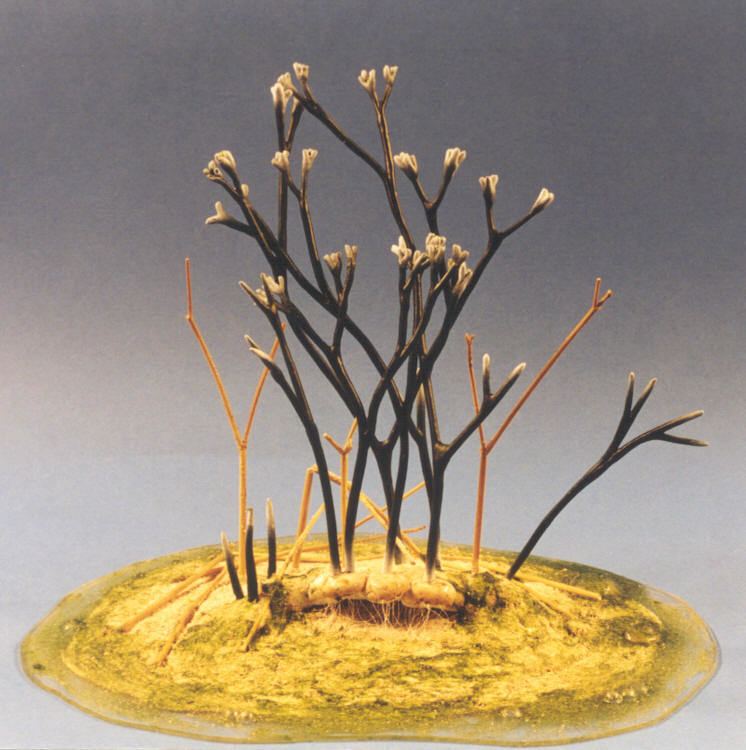 | ||
Family †HorneophytaceaeKenrick & Crane (1997) Similar Aglaophyton, Rhynia, Asteroxylon, Nothia, Psilophyton | ||
Horneophyton, a member of the Horneophytopsida, is an extinct early plant which may form a "missing link" between the hornworts and the Rhyniopsida. It is among the most abundant organisms found in the Rhynie chert, a Devonian Lagerstätte in Scotland.
Contents
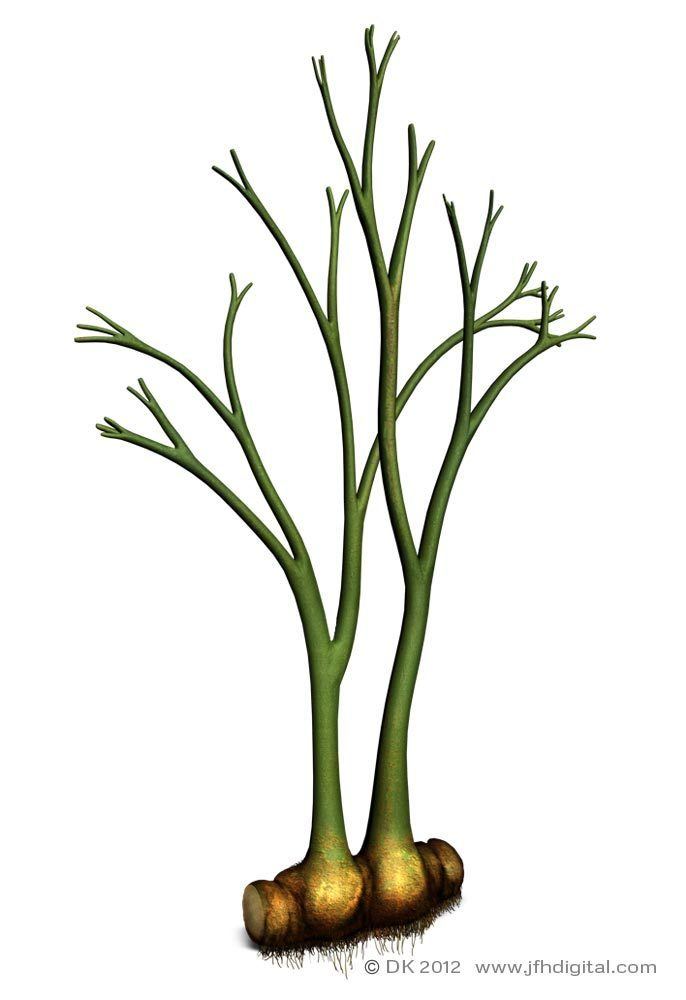
How to pronounce horneophyton
Description
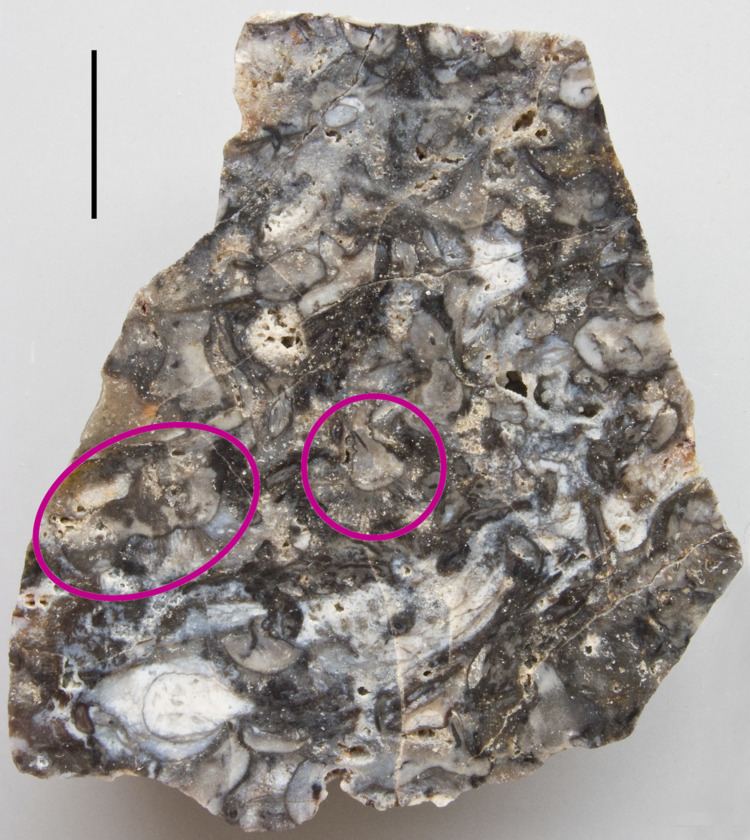
The sporophyte had bare stems (axes) up to 20 cm high and about 2 mm in diameter with an undivided cortex; stomata were present but rare. There was a thin central strand of conducting tissue, but this was not reinforced with spiral and reticulate thickenings (and thus does not constitute true vascular tissue). Early stages of development of the sporophytes of Horneophyton (as of hornworts) may have been dependent on their parent gametophytes for nutrition, but mature specimens have expanded, corm-like bases to their stems, up to 6 mm in diameter, that bore rhizoids and appear to be anchored in soil, suggesting a capacity for independent existence after the gametophyte had degenerated.
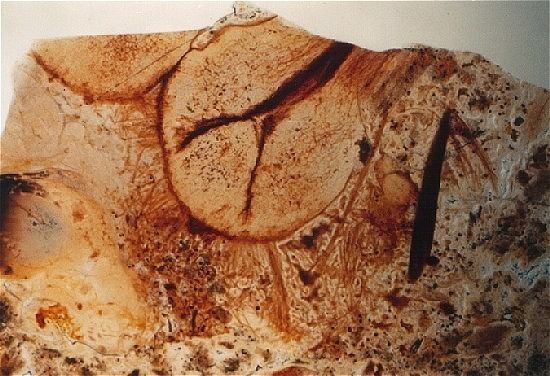
The sporangium (spore-forming organ) is unique among both living and fossil plants, consisting as it does of branched lobes at the apex of some of the branches of the stem. Each lobe contains a central collumella, analogous to the sporangia of hornworts; however, the sporangia of hornworts do not dichotomise. The number of lobes possessed by a sporangium varied; at least three orders of dichotomous branching have been found, resulting in more than four lobes. The sporangia were much less regular than shown in most reconstructions (including that opposite), and they had 'bumps' or emergences on them. Spores were released through a slit at the top of each lobe. The sporangia of Horneophyton contained trilete meiospores, the surfaces of which were decorated with short conical protuberances.
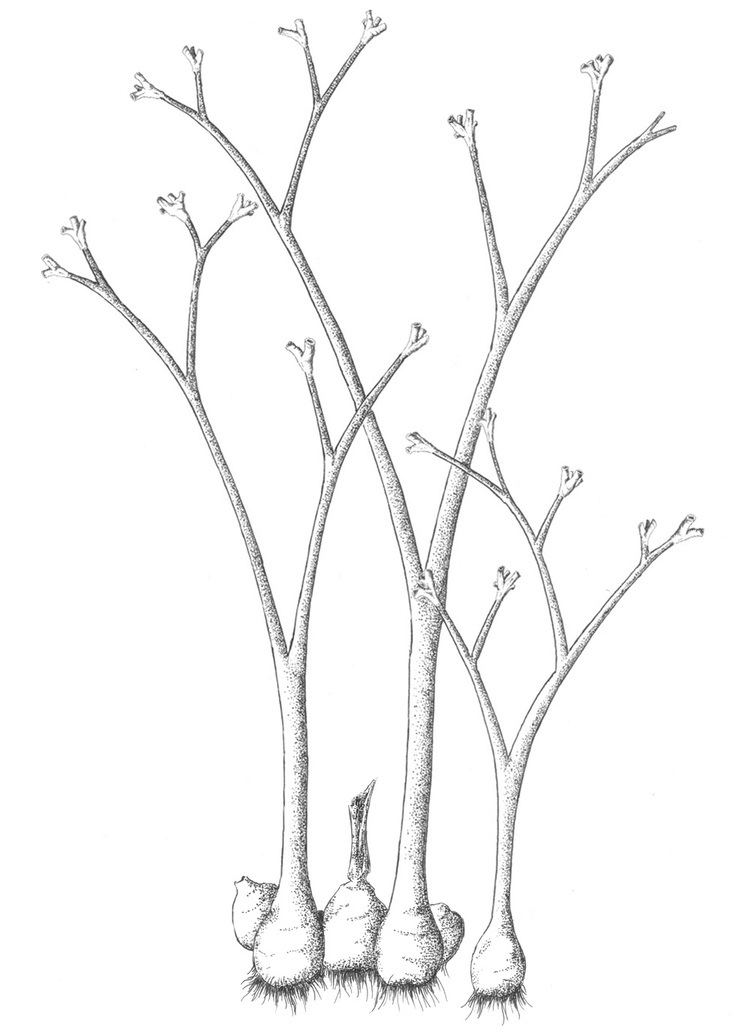
The female gametophyte of the plant has been recognised and described as the form taxon Langiophyton mackiei. It grew to a height of around 6 cm, and was free living. It may have been dioicous, i.e. produced male and female gametes on separate plants.
Horneophyton grew on sandy, organic-rich soil in damp to wet locations. They usually grew as isolated individuals.
Taxonomy

First named by Kidston & Lang in 1920 from Early Devonian fossils forming the "Rhynie flora", the original generic name Hornea transpired to be a synonym, leading to Barghoorn and Darrah renaming the genus to Horneophyton in 1938. It was classified as a rhyniophyte (subdivision Rhyniophytina) by Banks; the absence of true vascular tissue led Kenrick and Crane in 1997 to create a new class, Horneophytopsida, for this and apparently similar genera.
Phylogeny
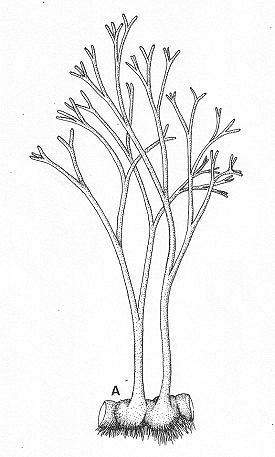
A possible phylogeny for Horneophyton is shown below (based on Crane et al. for the polysporangiophytes and Qiu et al. for the bryophytes.
With vascular tissue but "bryophyte"-like alternation of phases and sporangia, the organism has been considered a missing link between the hornworts and the vascular plants or tracheophytes (which molecular data suggest are sister groups). Features suggesting a relationship with the hornworts include the general form of its sporangia; its corm also resembles the foot of some hornworts. The free living nature of its sporophytes, and the fact that they display branching, are marked differences which force it into the stem group of tracheophytes (along with Aglaophyton).
